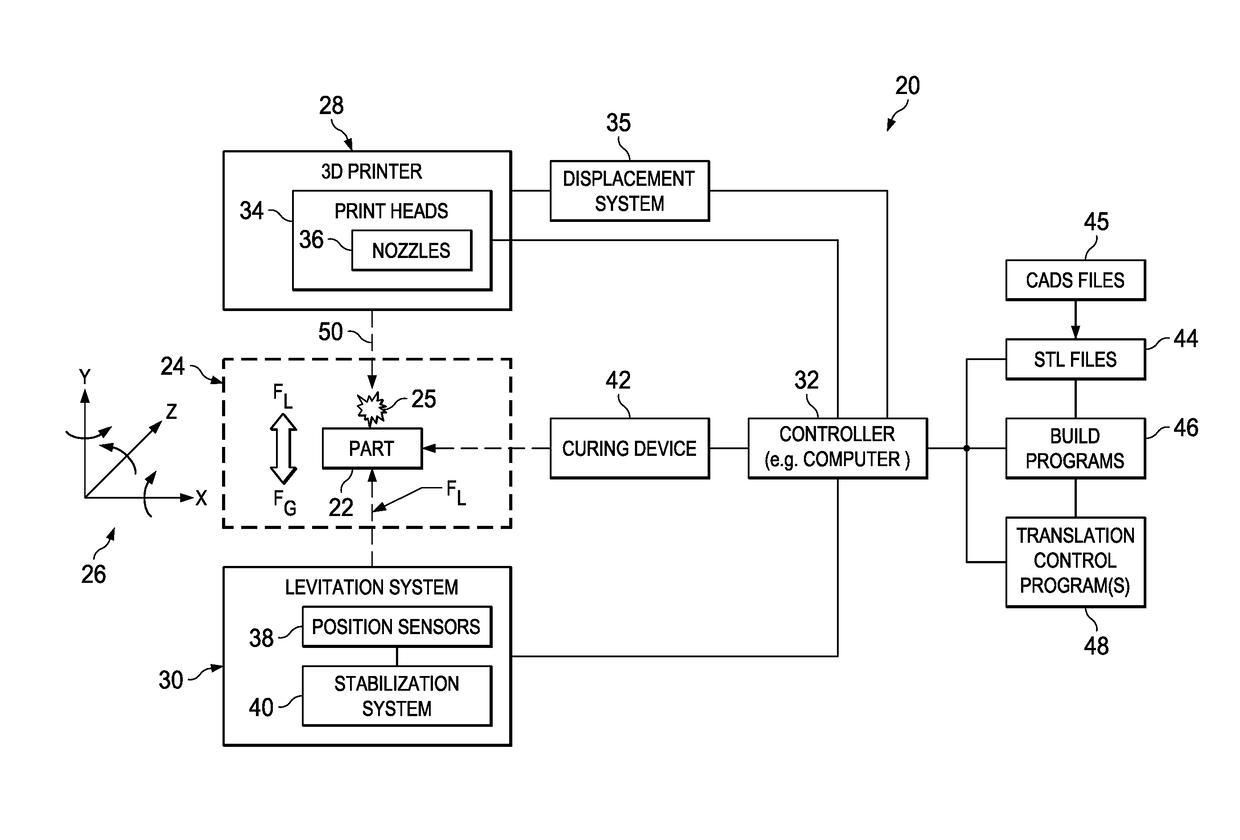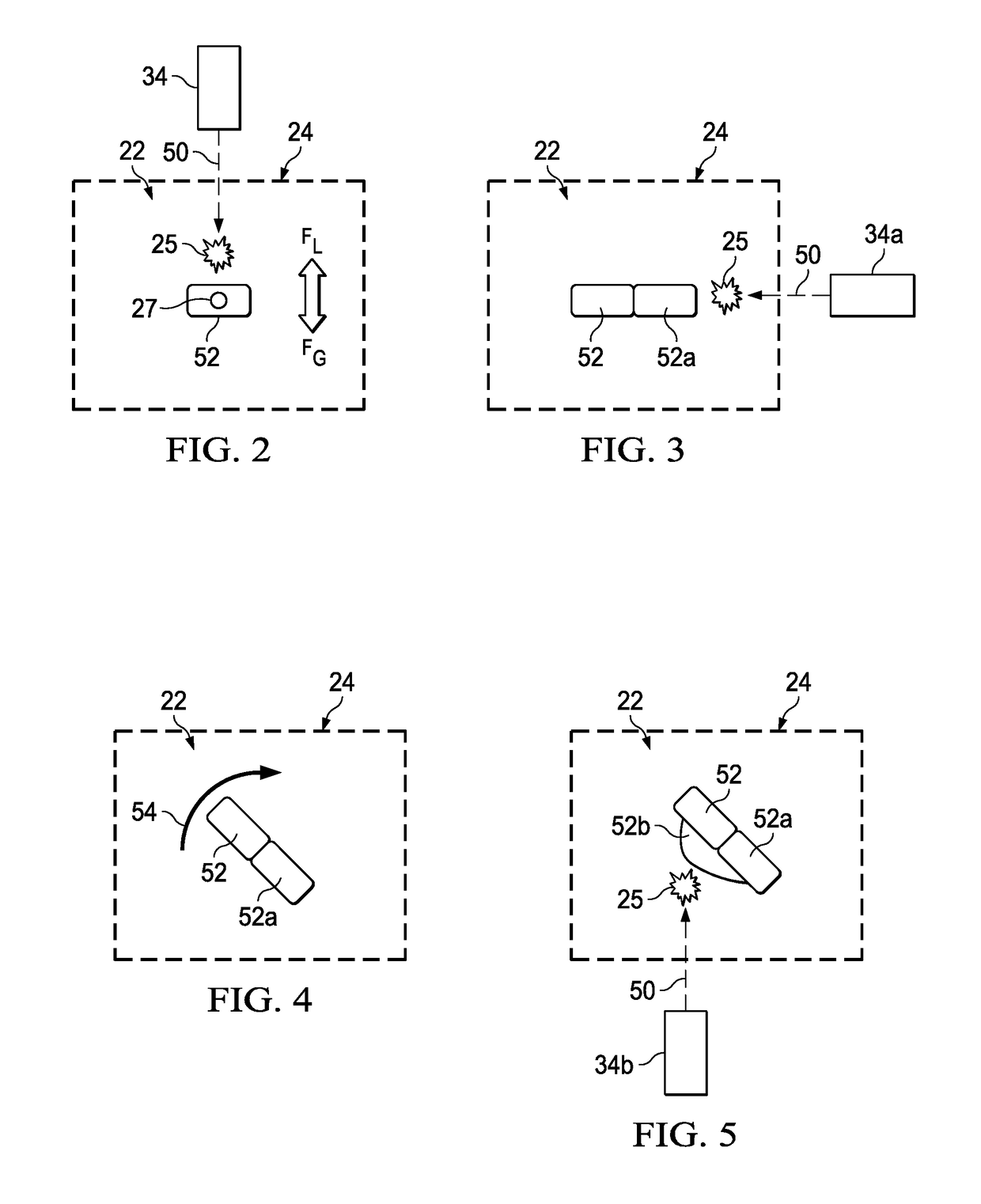Free-Form Spatial 3-D Printing Using Part Levitation
a free-form, spatial technology, applied in the direction of additive manufacturing, manufacturing tools, additive manufacturing, etc., can solve the problems of limiting the geometry and/or features of parts that can be fabricated, and the use of a single print head to form features of each layer renders the fabrication process relatively slow, so as to achieve the effect of increasing the fabrication speed
- Summary
- Abstract
- Description
- Claims
- Application Information
AI Technical Summary
Benefits of technology
Problems solved by technology
Method used
Image
Examples
Embodiment Construction
[0022]FIG. 1 illustrates the overall components of an apparatus 20 for full body, free-form 3-D printing and levitating a part in space. The apparatus 20 broadly comprises a 3-D printer 28 for additive fabrication of a part 22, and a levitation system 30 for levitating and translating the part 22 within a coordinate system 26 in free-space 24 during the fabrication process. The levitation system 30 applies a levitational force FL to the part 22 which is substantially equal to the gravitational force FG acting on the part 22, resulting in the part 22 being suspended or levitated within the space 24.
[0023]The 3-D printer 28 may comprise any of a variety of known devices that build the part 22 by selectively placing and adding material 25 to the part 22. The 3-D printer 28 may include one or more print heads 34 located at different positions around the space 24, each of which may include a plurality of nozzles 36 for extruding, propelling or jetting 50 material 25 into the space 24.
[00...
PUM
| Property | Measurement | Unit |
|---|---|---|
| frequency | aaaaa | aaaaa |
| pressure force | aaaaa | aaaaa |
| alternating frequency | aaaaa | aaaaa |
Abstract
Description
Claims
Application Information
 Login to View More
Login to View More - R&D
- Intellectual Property
- Life Sciences
- Materials
- Tech Scout
- Unparalleled Data Quality
- Higher Quality Content
- 60% Fewer Hallucinations
Browse by: Latest US Patents, China's latest patents, Technical Efficacy Thesaurus, Application Domain, Technology Topic, Popular Technical Reports.
© 2025 PatSnap. All rights reserved.Legal|Privacy policy|Modern Slavery Act Transparency Statement|Sitemap|About US| Contact US: help@patsnap.com



